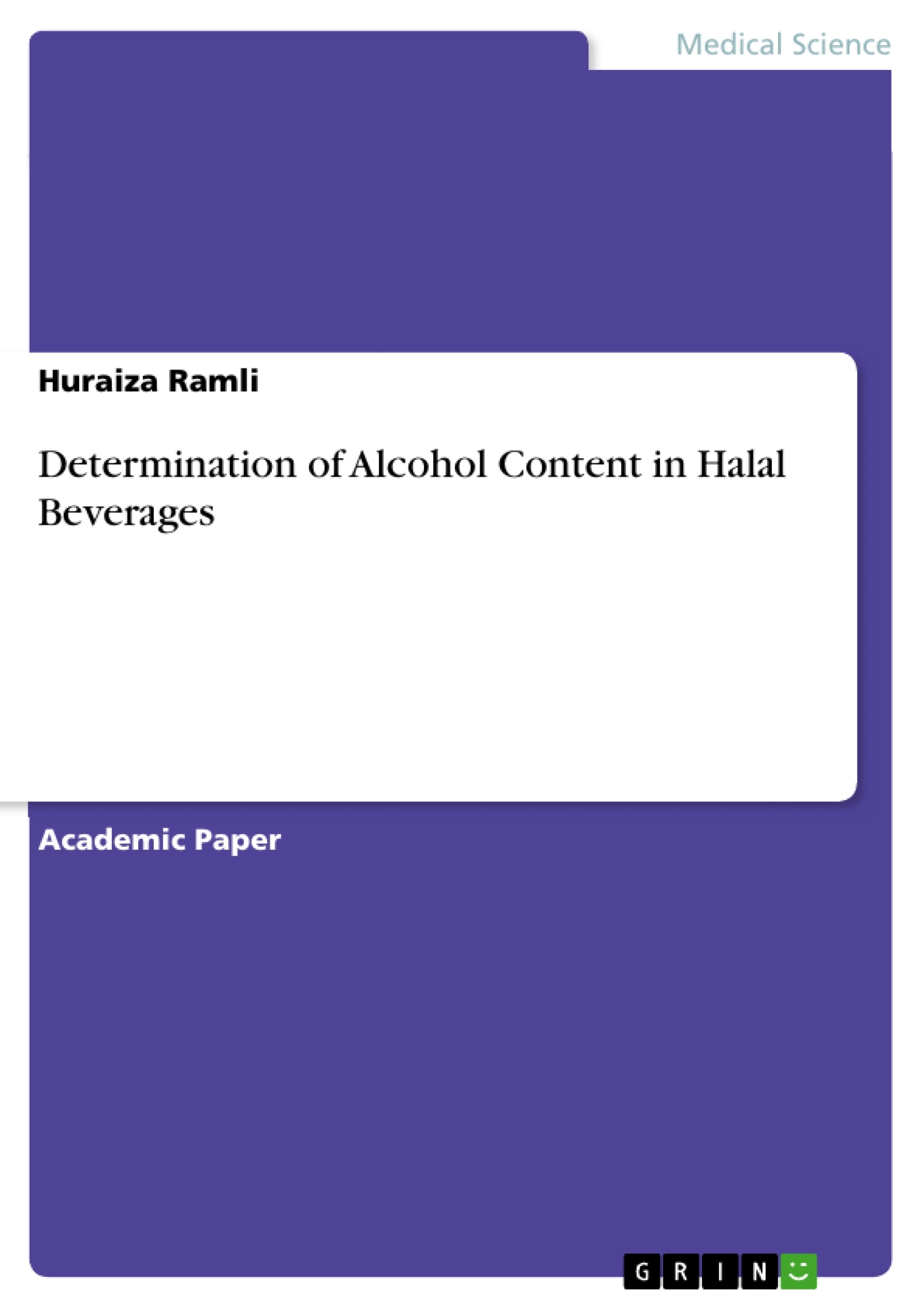The study involved the detection of the alcohol content of various market halal beverages products. The objectives of this study are to identify the food products that contain alcohol and to quantify the percentage of ethanol present. Gas Chromatography-Mass Spectrometer (GC-MS) was used to screen the samples for detection of ethanol and further quantification. Samples were purchased from several hypermarkets in Kuantan. A total of 95 samples, including fermented and cultured beverages, carbonated drinks, juices and cordials, tea and coffee, energy drinks, colouring and flavourings, and vinegars were analyzed. Of the total number of samples screened, 58 were found to contain ethanol. The ethanol content in the samples ranged from 0.001% to 3.510%. The GC-MS method is proven to be an effective and reliable method for the detection of low alcohol concentrations by minimizing the loss of the ethanol compound during sample preparation and extraction. Ethanol is present due to natural fermentation of the product or added as solvent during production.
Inhaltsverzeichnis (Table of Contents)
- INTRODUCTION
- OBJECTIVES
- PROBLEM STATEMENTS
- LITERATURE REVIEW
Zielsetzung und Themenschwerpunkte (Objectives and Key Themes)
This study aims to identify the presence of ethanol in various halal beverages marketed in Malaysia and quantify the percentage of ethanol present in these products. This research utilizes Gas Chromatography-Mass Spectrometry (GC-MS) to analyze the samples.
- The definition and prohibition of alcohol (khamr) in Islam
- The use of alcohol in food production and its halal status
- The determination of permissible alcohol content in food products
- The ethical considerations of fermentation processes in producing halal food
- The application of GC-MS in analyzing alcohol content in food products
Zusammenfassung der Kapitel (Chapter Summaries)
The introduction lays out the context of the study, highlighting the importance of halal certification and the growing concern regarding alcohol content in food products. It outlines the study's objectives, which are to identify ethanol in food products and quantify its percentage using GC-MS.
The literature review delves into the controversial issue of alcohol presence in halal food, emphasizing the differences between khamr (intoxicating drinks) and alcohol in general. It explores the use of alcohol in various industries, including food processing, cosmetics, pharmaceuticals, and others, and discusses the ethical considerations surrounding fermentation processes.
Schlüsselwörter (Keywords)
The key themes and concepts explored in this study include alcohol content, halal food, GC-MS, ethanol, fermentation, khamr, halal certification, food industry, and ethical considerations.
- Citar trabajo
- Huraiza Ramli (Autor), 2018, Determination of Alcohol Content in Halal Beverages, Múnich, GRIN Verlag, https://www.grin.com/document/424947



